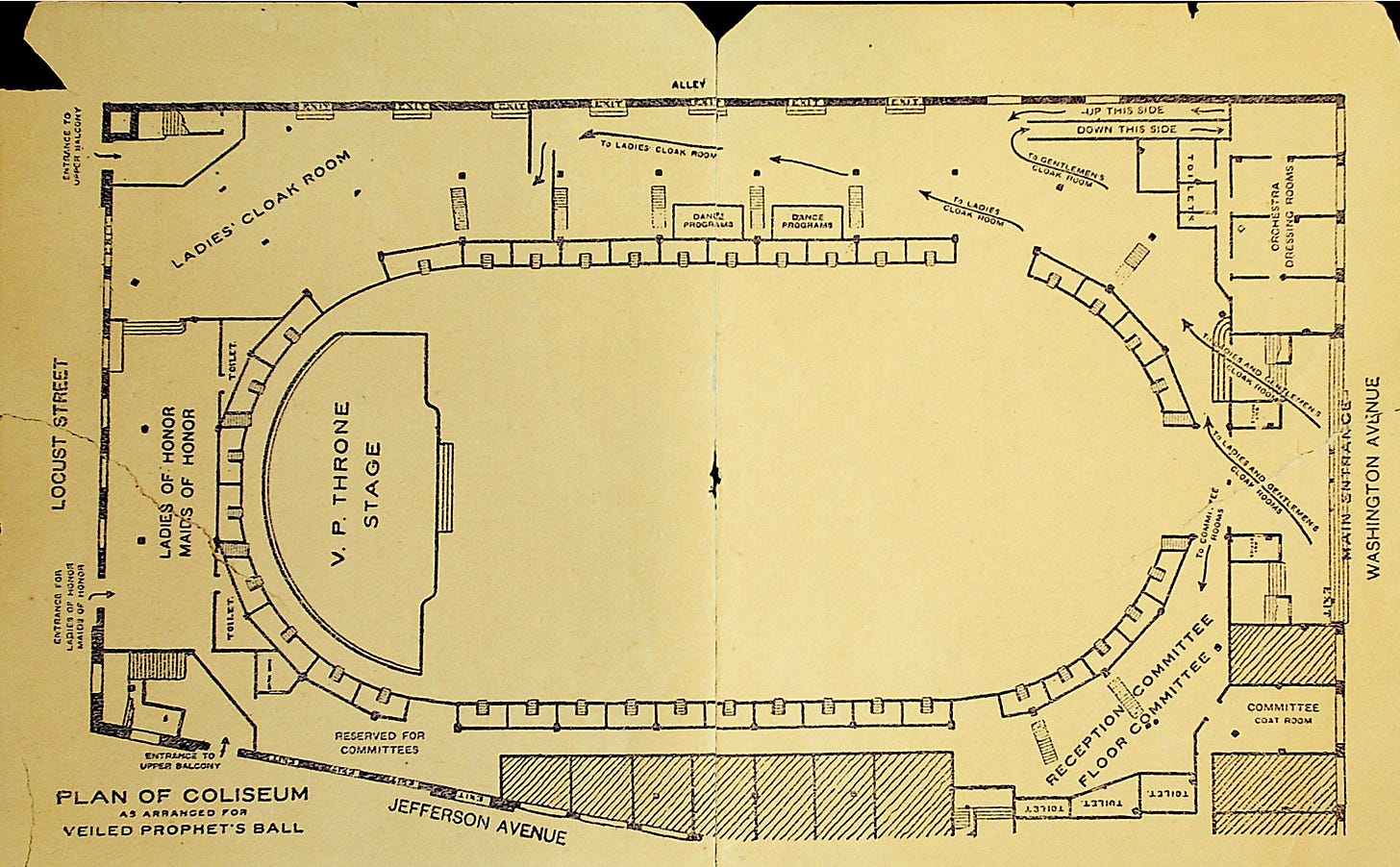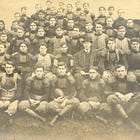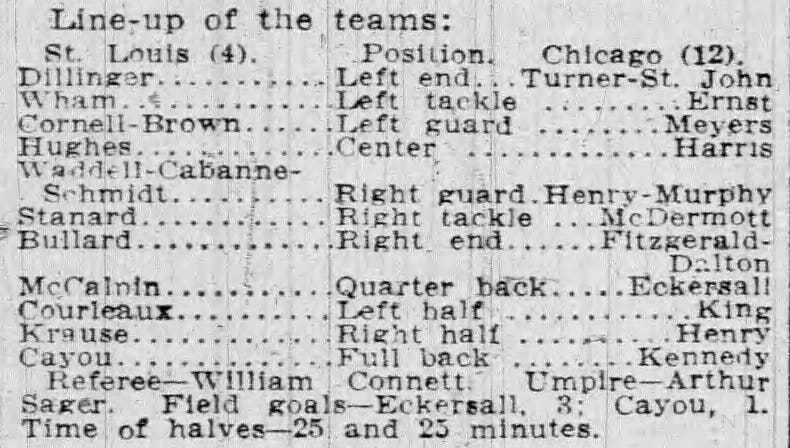1909 Chicago Eckersalls vs. St. Louis Cochems
Before there were Lions, Tigers, and Packers roaming Midwestern fields, there were all-star teams of former college players who got together for a few laughs and a good cause. Several such teams played late in 1908 and on New Year's Day 1909.
At the center of it all was Walter Eckersall, the 1906 All-American quarterback at Chicago and, by then, a Chicago Tribune reporter. Eckie decided to get the old gang back together, and rather than play in Joliet, they battled against similar teams in Minneapolis and St. Louis.
The Chicago Eckersalls were hard at practice by the end of October when they challenged Chicago's varsity to a scrimmage and reportedly got the best of them.
They played only two games I could find. One came in late November when they faced the Minneapolis Caprons, named after George Capron, the team organizer and the Gophers' halfback and third-team All-American kicker in 1907. Most of his teammates were former Minnesota players, with Bobby Marshall likely being the best of the lot.
The Minnesota-Chicago game ended in a 4-4 tie after Bobby Marshall and Walter Eckersall dropkicked field goals for their teams.
That game received little press, but the coverage picked up as Eddie Cochems, St. Louis U's coach and all-star team organizer, negotiated with the Caprons for a Christmas Day game in St. Louis and a New Year's Day game versus the Eckersalls. Both games were to be held indoors, in the warm and well-lit confines of the newly opened, 8,000-seat St. Louis Coliseum.

The Coliseum accommodated a sawdust playing field between 60 and 70 yards long that was also narrower than usual. Rather than waste the limited playing space with goal posts, they put them in the stands, hanging paper between the posts so the crowd could see the ball pierce the paper on completed field goal attempts.

Playing indoors on New Year's Day had advantages and disadvantages, but the biggest challenge for both teams and for attracting a crowd was determining who would play in the game. As the home team, St. Louis had the advantage since they could pull former players who were home for the holidays, while the Chicagoans played on the road.
Chicago lineup in St. Louis different from the one in Minneapolis. For publicity purposes, Chicago announced a lineup with a slate of players worth seeing, particularly Eckersall, and their announced lineup matched the game's starters.
LE: Jimmy Turner, Northwestern
LT: Jack Ernst, Lafayette
LG: Meyers, Beloit
C: Bob Harris, Chicago
G. Jack Henry, Beloit
T: McDermott, Notre Dame
E: Fitzgerald, Notre Dame
HB: King, Army
HB: Kennedy, DePauw
FB: Dick Henry, Swarthmore
QB: Walter Eckersall, Chicago
The St. Louis Cochems were a different story. Eddie Cochems coached St. Louis U from 1906 through 1908, and he hoped to use several SLU graduates and a few underclassmen for the charity game. However, the AAU informed SLU that players with remaining eligibility would forfeit their amateur status by appearing in the game. Then, a personal spat among several SLU players left Cochems scrambling to fill four starting slots (denoted in bold).
LE: Dillinger, Illinois
LT: Wham, Illinois
LG: Shoemacher, SLU || Cornell, unknown
C: Henry Lindsay, SLU || Hughes, SLU
RG: Rube Waddell, St. Louis Browns (MLB)
RT: Stanard, Princeton
RE: Pike Kenney, SLU || Fitzgerald, unknown
QB: McCalpin, unknown
LHB: Robinson, SLU || Courleaux, SE MO coach
HB: Krause, unknown
FB: Cayou, Carlisle and WashU coach
An announced crowd of 5,000 attended the game, and, by all accounts, they were treated to a fun afternoon. The short, narrow field made sweeps difficult, so most runs went up the gut. Only two forward passes hit their mark, and the short field meant the teams needed to pick up only one or two first downs to enter field goal territory.
The star of the game was Eckersall, who made good on three first-half dropkicks and added another in the second half. The defensive star for St. Louis was Rube Waddell, then heading into his twelfth season in the majors, having led the American League in strikeouts in six seasons. While Waddell had a talented arm, the future Hall of Famer was among the oddest men to play in the bigs, which is an exceeding low or high bar, depending on your perspective. Anyway, he made tackles all day to keep the Mound City boys in the game. Frank Cayou dropkicked a goal from his fullback position for St. Louis' only score of the game.

Unfortunately, the uncertainty about which St. Louisans would play in the game resulted in a smaller-than-expected crowd. The 5,000 attendees produced ticket sales of $2,337.75 in ticket sales, which, after paying Chicago's travel, facility rental, and other expenses, left only $227.95 for charity, which created another mini-scandal.
Barnstorming all-star teams were always a gamble until Red Grange came along. However, some have named Eckersall the best pre-1920s quarterback, so he wasn't far behind, and his presence helped the St. Louisans donate a few bucks to local charities.
Football Archaeology is reader-supported. Click here to buy one of my books, donate, or otherwise support the site.





Walter should have called his team the "Eckies"- sounds much better than "Eckersalls".